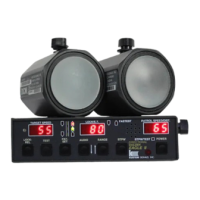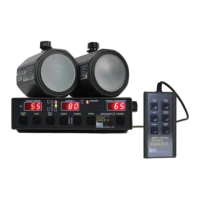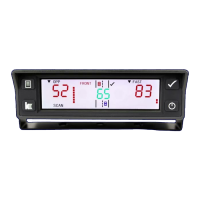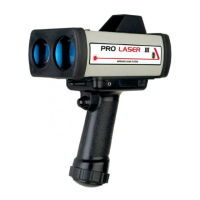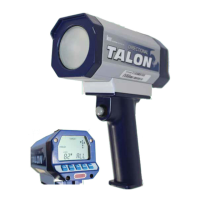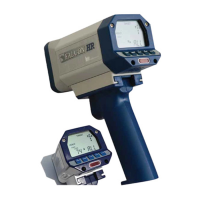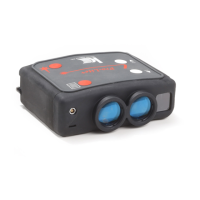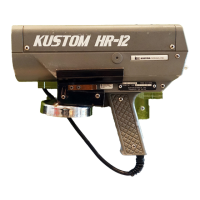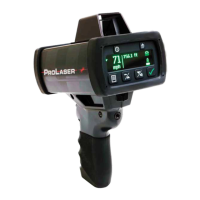Do you have a question about the Kustom Signals EAGLE II and is the answer not in the manual?
Details radar type, frequency, tuning forks, band selection, accuracy, voltage, and power requirements.
Explains speed processor, operational processor, manual tests, and automatic self-tests for the unit.
Procedures for inspecting the unit for shipping damage and verifying the packing list.
Lists standard and optional equipment included with the radar system.
Instructions for mounting the auxiliary power receptacle and the indicator unit.
Mounting the indicator unit, including safety precautions regarding vehicle airbags.
Mounting the front antenna, covering grounding notes and potential interference issues.
Instructions for mounting the rear antenna, including checking for fan interference.
Details the installation of the speedometer pulse cable and directs to online diagrams for specifics.
Identifies and explains the functions of the front panel controls and displays.
Describes the connectors and features located on the rear panel of the unit.
Details the wired and wireless remote control units, including their buttons and operation.
Provides instructions for operating the unit without a remote control if it becomes broken or lost.
Explains how the radar system transmits, receives, and processes signals for speed measurement.
Discusses the safety of microwave RF emissions and relevant exposure limits.
Introduces internal and tuning fork tests for ensuring unit accuracy and functionality.
Details the power-on sequence, including internal tests and display checks.
Explains the automatic internal accuracy tests performed by the radar unit.
Describes how to manually initiate lamp and internal tests using the TEST switch.
Provides procedures for performing accuracy tests in stationary and moving modes.
Explains how to use tuning forks to simulate vehicle speeds for testing radar accuracy.
Specific steps for performing tuning fork tests in stationary and moving modes.
Troubleshooting steps if tuning fork speed readings are not obtained correctly.
Describes verifying speed readings against the patrol vehicle's speedometer in moving mode.
Details the process of synchronizing the radar unit with the vehicle's speedometer.
Lists and describes the four different operating modes of the Eagle II radar system.
Guides on selecting a location, checking for interference, and positioning the vehicle for operation.
Step-by-step instructions for operating the radar in stationary mode.
Step-by-step instructions for operating the radar in moving mode.
Explains how the radar operates with or without speedometer pulse input.
How to turn the fan interference filter on or off to reduce interference.
Describes how to access the maintenance/configuration mode for diagnosis and troubleshooting.
Discusses how external sources can affect radar operation and how DSP circuitry handles influences.
Details natural factors like rain, dust, and terrain that can affect radar performance.
Explains man-made influences such as shadowing, combined speeds, and RFI.
Explains the importance of true groundspeed for moving radar and how to recapture it.
Provides guidelines for cleaning, protecting, and handling the radar unit to ensure longevity.
Lists important legal cases related to traffic radar use and acceptance of Doppler principles.
Explains FCC rule amendments regarding transmitter power measurement and specifications.
Details the elimination of separate authorization requirements for radar speed detection devices.
Lists available operating parameters and how to change them.
Describes the function of each settable option for the radar unit.
Details the automatic unlocking feature for locked speeds.
Explains the setting for minimum audio level, including the option to turn audio off.
Describes the option to blank the locked patrol speed.
Explains how the radar unit interfaces with video or display equipment.
Details how to set speed readings to miles per hour or kilometers per hour.
Provides examples of how to set active options and change unit parameters.
Outlines the terms, conditions, and limitations of the product warranty.
| Brand | Kustom Signals |
|---|---|
| Model | EAGLE II |
| Category | Radar |
| Language | English |
